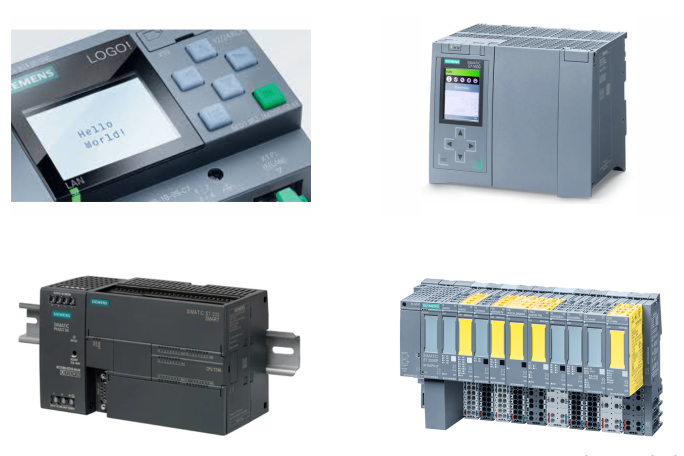
In today’s industrial world, automation plays a crucial role in increasing efficiency, productivity, and safety. One of the key components in industrial automation is the PLC motor. Programmable Logic Controllers (PLCs) and motors work together to perform various tasks, ranging from simple machine operations to complex processes in factories and manufacturing plants.
In this blog, we will explore what a PLC motor is, how it functions, its benefits, and the most common applications where PLC-controlled motors are used. We’ll also discuss why this technology has become a cornerstone in modern industrial automation.
What Is a PLC Motor?
A PLC motor refers to an electric motor that is controlled by a Programmable Logic Controller (PLC). The motor is often part of a larger automated system, where the PLC is responsible for receiving inputs, processing information, and sending commands to the motor to perform specific tasks.
The PLC motor system typically includes several components:
PLC (Programmable Logic Controller): This is the brain of the operation, responsible for making decisions based on the data it receives.
Motor: The motor, usually an AC or DC electric motor, is what performs the physical task, such as moving a conveyor belt or rotating machinery.
Sensors and Input Devices: These provide feedback to the PLC about the motor’s speed, position, or other operational parameters.
Actuators and Output Devices: These translate the PLC’s commands into real-world actions, such as turning the motor on or off or adjusting its speed.
PLC-controlled motors are commonly found in manufacturing, food processing, automotive assembly, and even home automation systems.
How Does a PLC Motor Work?
The operation of a PLC motor involves several stages. Here’s a simple step-by-step explanation:
Input Signals: The system starts by receiving input signals from sensors or user input devices. These inputs could be anything from the temperature in a room to the position of a machine part.
Processing in the PLC: Once the inputs are received, the PLC processes the information based on a pre-programmed logic sequence. This programming is typically done using ladder logic or other PLC programming languages.
Commanding the Motor: Based on the information processed, the PLC sends commands to the motor. These commands could include starting, stopping, or adjusting the motor’s speed or direction.
Motor Response: The motor reacts to the PLC’s commands and performs the required action, such as running a conveyor belt, opening a valve, or rotating a robotic arm.
Feedback Loop: In some systems, feedback from the motor is sent back to the PLC. This feedback could be motor speed, temperature, or the completion of a task. The PLC uses this feedback to make further decisions or adjustments.
This loop of input, processing, output, and feedback forms the core of the PLC motor control system.
Benefits of Using a PLC Motor
PLC motors are highly beneficial for industries where precision, efficiency, and reliability are critical:
1. Automation and Precision
A PLC motor allows for high levels of automation. By controlling motors using a PLC, operations can be more precise, and human errors can be minimized. This is especially important in manufacturing, where precision timing and control are required.
2. Flexibility and Customization
Since PLCs are programmable, they offer a high degree of flexibility. You can easily change the programming to meet new production needs without having to physically alter the machinery. This makes it ideal for industries that need to frequently update their processes.
3. Reduced Downtime
The feedback loop system in PLC-controlled motors allows for real-time monitoring of the motor’s performance. If an issue arises, the PLC can alert the operator or even take corrective action automatically, minimizing downtime.
4. Energy Efficiency
Many PLC motors are designed to be energy-efficient. Through precise control of speed and torque, a PLC motor system can reduce unnecessary power consumption, making the operation more sustainable.
5. Cost Savings
By automating tasks, reducing downtime, and improving energy efficiency, a PLC motor system can significantly lower operational costs over time.
Applications of PLC Motors
PLC motors have a wide range of applications across various industries. Let’s explore some common use cases:
1. Manufacturing and Assembly Lines
In manufacturing, PLC motors are widely employed to manage conveyor belts, robotic arms, and various types of machinery.The ability to precisely control motor speed, position, and torque makes PLC motors essential for efficient production.
2. Packaging Industry
In the packaging industry, PLC motors control the flow of materials, the operation of wrapping machines, and the movement of products on assembly lines. They ensure that packaging is done accurately and at high speed.
3. Food and Beverage Processing
In food processing plants, PLC motors are used for tasks such as mixing, grinding, and moving products along the production line. The hygiene and safety standards in these industries make it essential for motors to operate reliably under various conditions.
4. HVAC Systems
Heating, ventilation, and air conditioning (HVAC) systems in buildings often rely on PLC motors to control fans, compressors, and pumps. The PLC ensures that the system operates efficiently, adjusting motor speeds to optimize energy usage.
5. Automotive Industry
The automotive industry uses PLC motors in many processes, including welding, painting, and assembly. Precision control is critical in ensuring that each vehicle component is assembled correctly.
6. Home Automation
In some advanced home automation systems, PLC motors are used to control appliances, window shades, or even garage doors. Although this is a less common application compared to industrial uses, it demonstrates the versatility of PLC motor systems.
Conclusion
PLC motors are a vital part of industrial automation, allowing for precise control over machinery and processes. Whether used in manufacturing, food processing, or home automation, a PLC motor offers numerous benefits, including increased efficiency, reduced downtime, and cost savings. As technology continues to advance, we can expect even more exciting innovations in the world of PLC motors, such as IoT integration and AI-driven controls.


